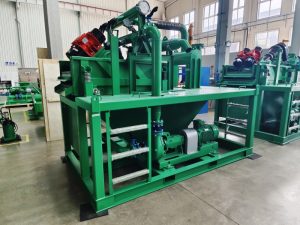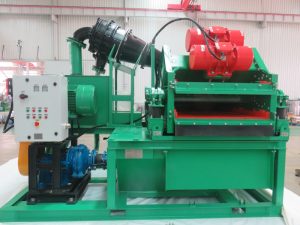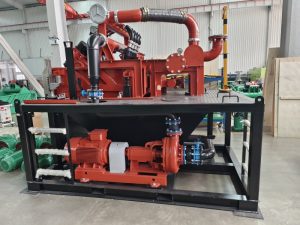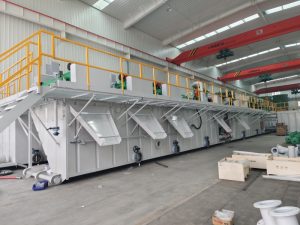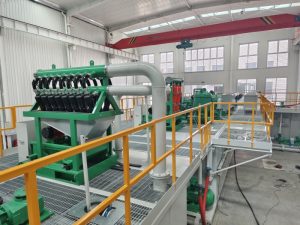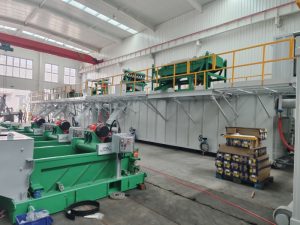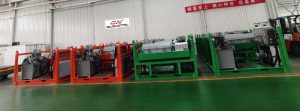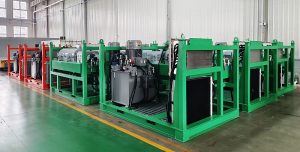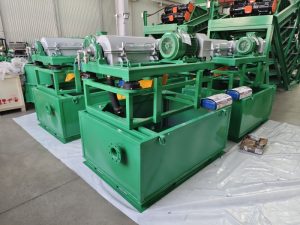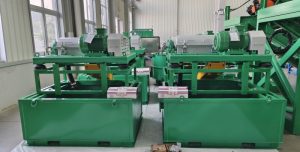Recently 2 sets of 500gpm mud recycling system are ready for shipment to South America, this is customized mud recycling system based on GNMS-600B self contained 600gpm mud recycling system. The technical configuration is as below:
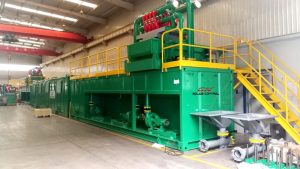
1. 3 phase cleaning mud cleaner,which consists of double deck shale shaker, desander cone, desilter cone, the separation cut point is 15 microns. The bottom layer shaker screen can be used as coarse solids separation shale shaker, the top layer shaker screen works as mud cleaner shaker screen. 2ea of 2.6HP vibration motor drived the double deck shale shaker, with bottom 3 panel shaker screens and top 3 panel shaker screens .The drilling fluids treated by bottom shaker screen dropped into the sand trap, the desander feeding pump suck the drilling fluids and feed to desander cone, the treated mud dropped in to desander compartment, the desilter feeding pump suck the drilling fluids and feed to desilter cone, the clean mud flow to desilter compartment, it can be reused or mixed with chemical additives to prepare for new drilling fluids.
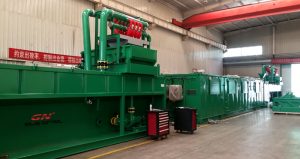
2. Mixing hopper with mixing pump
3. Feeding pump for desander cone and desiter cone
4. Mud tank with accessories, electric control system
5. Mud agitator and mud gun
The 500gpm mud recycling system can be applied for HDD & CBM projects, also it can be used for mining separation, waste water recycling and other construction slurry separation projects. Except for 500gpm mud recycling system, we also have 200gpm, 350gpm, 600gpm, 800gpm, 1000gpm, 1500gpm mud recycling system, and 200gpm, 500gpm, 1000gpm desander unit for TBM & Piling projects.
Also we have 240m3/h, 360m3/h, 500m3/h, 800m3/h, 1000m3/h, 2000m3/h, up to 3000m3/h TBM slurry separation plant for both micro tunneling project and Middle/Large TBM Construction. For more information of mud recycling system, pls contact with GN solids control.
